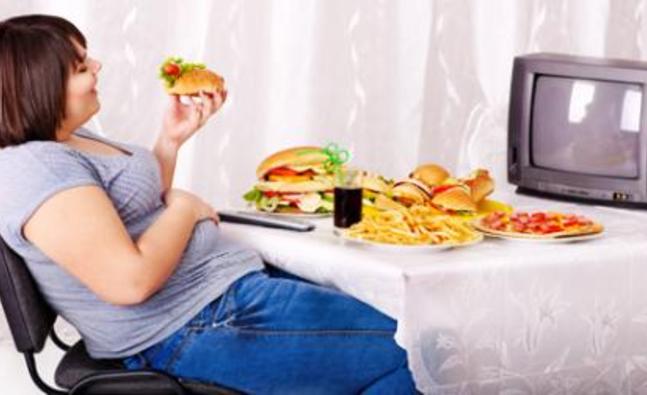8 Signs your kitchen is making you fat

The kitchen is the heart of your home, but it might also be at the heart of your unwanted weight. Everything from the size of your plates to the wattage of your bulbs has a direct effect on what and how much you eat, according to research in the Annual Reviews of Nutrition. Here are signs that your kitchen is sabotaging your waistline-and simple fixes to get the scale moving in the right direction.
1. Your plates are platter size
"Most of us make a habit of filling our plates and finishing what's on them," says Lisa Young, PhD, RD, author of The Portion Teller Plan. But since the 1970s, dinner plates have grown by 25%. Eat off a plate about 5.08cm smaller and you'll serve yourself 22% fewer calories per meal, which can mean a 0.9kg weight loss in 1 month, says Brian Wansink, PhD, director of Cornell University's Food and Brand Lab and the author of Mindless Eating.
Solution:
Rethink your place settings. Use your salad plate to hold higher-calorie meats or pasta, and load your dinner plate with veggies, says Young.
2. You love bright light
High-wattage lighting can raise stress levels, stimulating your appetite and causing you to eat faster than usual, according to research reviews. On the flip side, too dim is no better - studies show low lighting lessens inhibitions.
Solution:
When you're cooking, flip on as many lights as you'd like, but when it's time to eat, use no more than 240 total watts.
3. Your counters are cluttered
"Kitchens often become dumping grounds," says Peter Walsh, a professional organizer and the author of Does This Clutter Make My Butt Look Fat? A messy space makes healthy eating harder because it's a lot easier to grab a few cookies or order pizza than it is to unearth a countertop and cook. Plus, clutter leads to stress, which raises cortisol levels in the blood, increasing hunger, adds Pam Peeke, MD, a prevention advisor and the author of Fit to Live.
Solution:
Pick one spot for mail and newspapers, and keep large areas of counter space clear for meal prep. Also, store a few cooking tools, such as a plastic steamer or food chopper, on an easily accessible shelf. Reserve an area in the kitchen for eating only, designated by place mats, suggests Evelyn Tribole, RD, who specializes in intuitive eating. When you separate eating from other activities, you're more likely to focus on your food and listen to fullness cues. Studies show that when distracted, you'll eat 15% more.
4. Your glasses are wide
People serve themselves more cooldrinks and juice when using short, wide glasses than they do with tall, skinny ones, according to recent research. That's because we focus on the height of beverages when pouring a portion.
Solution:
Use skinny glasses for cooldrinks and juice, and fill wider ones with water. When it comes to weight loss, what you drink has a greater impact than what you eat: Studies show that you could lose 0,45kg in 6 months just by cutting out 1 sugar sweetened drink a day.
5. Your cookie jar is clear
According to a research review, just seeing tempting food makes people feel hungrier. It also causes the release of dopamine, a brain chemical that produces a feel-good sensation and may intensify a particular craving.
Solution:
"Re-engineer what's within reach," says Wansink. Put trigger foods in opaque containers and stash them in an inconvenient spot. When you need a step stool to reach those cookies or have to push past veggies to get to the leftover cake in the fridge, it serves as a speed bump to help you pause and reconsider, says Wansink. You should also create a snack bucket, adds Rubino. If you chose a fruit cup instead of potato chips every day, you'd be 1,8kg slimmer in 6 months.
6. Your kitchen is Grand Central
On average, kitchens are 50% larger than they were 35 years ago, making them a place where lots of activities happen, such as watching TV or paying bills. According to a recent study, participants who ate while watching TV consumed more food and ate more often - about one extra meal per day.
Solution:
Move the TV or laptop out of the kitchen, and shift tasks like talking on the phone to another room, where food is out of sight. And between meals, keep the kitchen lights off - it's a subtle sign that says the kitchen is closed.
7. Your fresh produce is hidden
Eating five servings of fruits and veggies a day can help you lose weight and keep it off - yet fresh produce makes up about a quarter of the food we throw away every day, according to research from the University of Arizona. One reason you forget may be that you're stashing it in a place where it's usually out of sight-and out of mind.
Solution:
Buy only a week's worth at a time, and keep it at eye level in the fridge or in a pretty bowl on your kitchen table, suggests Rubino. Some fruits and veggies actually taste better and stay fresher longer at room temperature, including oranges, grapefruit, mangoes, and tomatoes, according to produce specialists at the University of California Davis.
8. You serve food family style
When heaping bowls of food are in front of you, you're much more likely to scoop another helping than if you have to cross the room to get to the extras, says Young. It's also harder to keep track of calories: In one study, people guessed they had one or two servings during a family-style dinner, when in fact many of them had taken up to four.
Solution:
Plate your main dish, such as meat and rice or pasta, at the stove, and store the leftovers - you're less likely to automatically go for seconds if the food isn't easily accessible, says Tribole. But do keep bowls of salad and vegetables on the table during dinner - most of us don't get enough servings a day, and having these low-calorie options at arm's reach may encourage a second or third helping.
-
3 Reasons to add avocados to your daily diet
-
10 TIPS ON HOW TO LOSE WEIGHT EFFECTIVELY WITHOUT STARVING YOURSELF
10 Tips On How To Lose Weight Effectively Without Starving Yourself
-
How To Suppress Hunger
The smell of peppermint is pretty much synonymous with the holidays—an
-
5 Diet myths debunked
-
Top habits of successful dieters: Be honest with yourself
-
3 Steps to spring clean your fat kitchen
- DON'T MISS
- Avoid deprivation language and aid weight loss
- 5 Ways to Eliminate Back Fat
- Little changes can give big results
- A pedometer can help you lose weight
- Healthy lunch takeaways
- Qsymia
- Prevent weight gain by taking time to chew
- Dont rush your meals
- The Number of Calories You Consume Because of Binge Drinking Will Blow Your Mind
- Eating breakfast reduces unhealthy cravings




